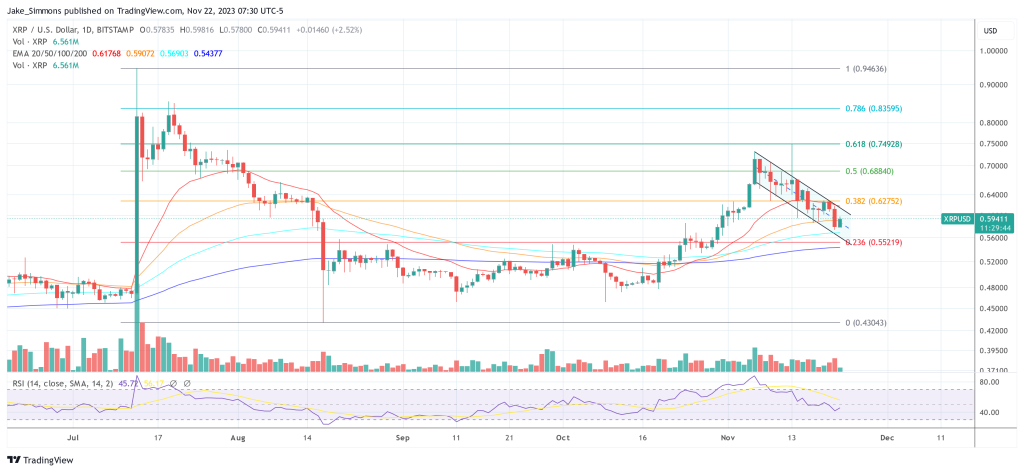In a recent conversation on X, David “JoelKatz” Schwartz, the Chief Technology Officer of Ripple, delved into the intricate dynamics between XRP and the company’s decision to move away from a traditional Initial Public Offering (IPO). This discussion offers a deep dive into the strategic choices and financial nuances.
Ripple Is Like Amazon
Schwartz, who is known for his straightforward nature and open communication with the XRP community, initiated a thought-provoking dialogue about corporate governance in the context of the drama around OpenAI and Sam Altman.
He questioned the effectiveness of traditional corporate structures in big tech companies, remarking, “I was just thinking, maybe a board that’s not accountable to investors and leaving the CEO and employees out of the upside isn’t such a great way to run a multibillion-dollar tech company.”
This statement sparked a debate with Blockchain Maverick, a participant in the discussion, who argued that XRP holders should be regarded as investors in Ripple, given that a significant portion of the company’s operational funding comes from the sale of XRP tokens. Maverick’s stance mirrors a broader discussion within the crypto community as well as the SEC’s arguments in the legal battle.
In a compelling response, Schwartz compared his company with Amazon’s business model. He explained, “Most of the cash that fuels Amazon’s biz operations comes from people who use their site to buy things from other people. Does that make them investors in Amazon?”
Schwartz Thoughts Why There Hasn’t Been An IPO Yet
Further exploring the financial trajectory of the company, Schwartz shed light on his personal stance and initial expectations regarding Ripple’s path to profitability. He disclosed, “My intention and belief were always that the way this would make money was for Ripple to IPO. That’s one of the reasons I didn’t take XRP but instead focused on Ripple stock for compensation.”
This revelation offers a rare insight into internal strategies and financial thinking at its highest levels. Notably, Schwartz admitted last July that taking Ripple shares instead of XRP was a “pretty big mistake, a number that was thrown around was 500 million XRP.” While Chris Larsen and Brad Garlinghouse took XRP, Schwartz speculated on an IPO.
Without mentioning the SEC lawsuit directly, Schwartz acknowledged the unforeseen developments that led the fintech company away from pursuing an IPO. He reflected, “The trajectory that took Ripple away from an IPO was completely unexpected, at least to me. Had Ripple been formed almost anywhere else in the world, it’d likely be a public company today.”
Blockchain Maverick raised concerns about investor protection and the implications of the company ‘creating’ a token instead of an IPO. “And had Ripple IPO’d vs created a token, we would be investors and we would be protected from systemic dumping, right? This is why the analogy of people buying from Amazon bothers me,” the community member noted.
Schwartz responded with a nuanced view, stating, “It’s hard to answer because the answer depends a lot on what alternative history you create to compare Ripple to. The company that became Ripple was created to distribute XRP to the world.”
At press time, XRP traded at $0.5941.









